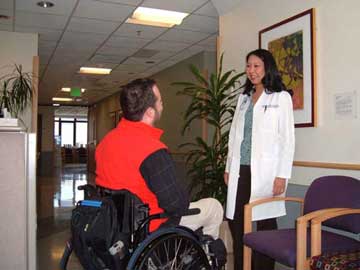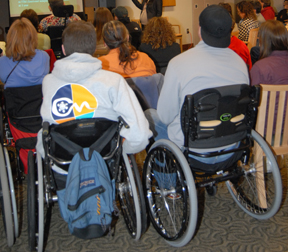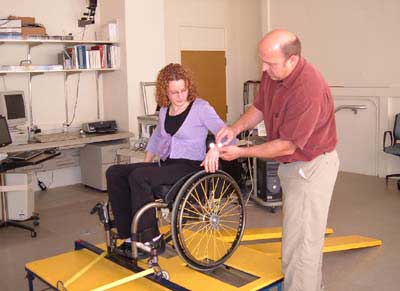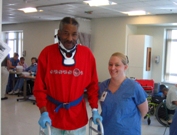Spinal Cord Injury Update
Spring 2005: Volume 14, Number 2
SCI Care in Turkey
Bilge Yilmaz, MD, (see photo) is spending a year at the University of Washington as a rehabilitation medicine fellow with Dr. Diana Cardenas. Yilmaz is a rehabilitation medicine physician in the SCI Unit of the Turkish Armed Forces Rehabilitation Center ( www.rehab.gata.edu.tr) [please make this a link] in Ankara, Turkey.
We asked him to tell us about himself and SCI care in Turkey.
The Turkish Armed Forces Rehabilitation Center (TAFRC) where I work is a modern facility serving persons with disabilities from all over Turkey and neighboring countries. It is the largest rehab facility in the country-a state-of-the-art center that is probably among the most comprehensive in the world. It includes a wide range of services, from gait analysis and cardiopulmonary exercise testing laboratories to bone densitometer and a hyperbaric chamber. There are two gymnasiums, five exercise rooms dedicated to orthopedic rehab, neurologic rehab, hand therapy, outpatient therapy and pediatric rehab; two large and two small aquatic rehabilitation pools; vocational, occupational and recreational therapy units; speech and cognitive therapy; as well as hydrotherapy and electrotherapy.
TAFRC serves 400 SCI patients per year and houses 200 active patient beds, 50 nursing home beds, and a 50-bed patient hotel. In addition to an acute care unit, TAFRC has separate rehabilitation units for patients with SCI, brain injury, stroke, amputation, and rheumatology.
The annual incidence of SCI in Turkey is about 12.7 cases per million population, significantly lower than the U.S. rate of 40 per million. Approximately 71% percent of injuries in Turkey occur among males, compared to 78.2% among males in the U.S. The average age at injury is 35.7 years, (38 years in the U.S.), and like the U.S., the most common causes of injury in Turkey are motor vehicle accidents, followed by falls, violence and sports-related injuries. The most common level of injury in both countries is C5.
The total length of hospital stay (acute and rehab) for SCI patients in Turkey is longer than in the U.S. (95 versus 55, respectively), mainly because PT and OT services in Turkey are primarily available only in the hospital setting.
Patients at our center can take vocational and recreational courses such as computer sciences, marbling, wood and metal works, painting and sculpture. These are provided by the Turkish Ministry of Education. The center has a wheelchair basketball team, an amputee soccer team, an archery team and a goal-ball team (a sport for people with visual impairments); many of these teams represent our country in the Paralympics.
Turkey's health care system consists of both public and private entities. About 85% of the citizenry has some kind of health insurance coverage, either through federal programs like the Social Insurance Organization and the Retirement Fund, or through private insurance. Most health facilities (63%) are operated by the Ministry of Health, 19% are private, 10% are run by the Social Insurance Organization, and the remainder are operated by the military and other public institutions.
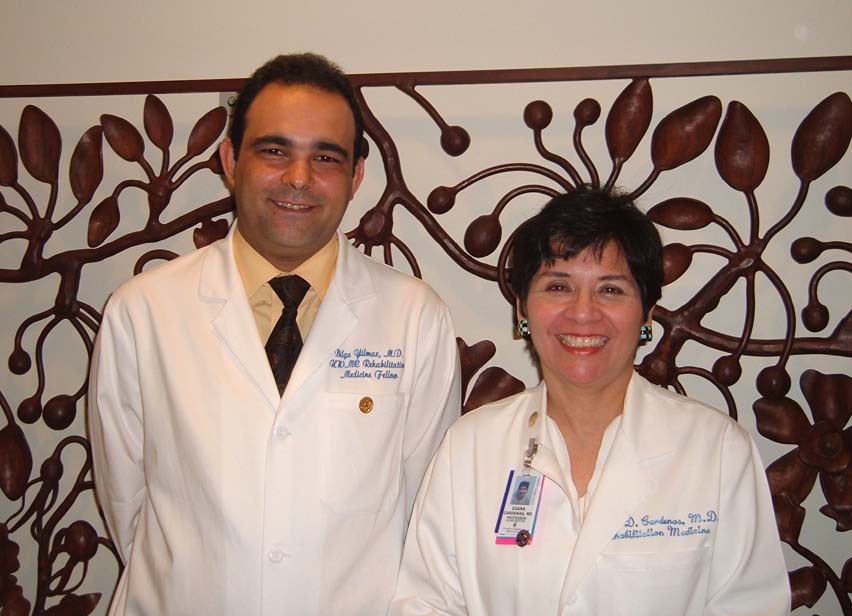
Figure 1: Bilge Yilmaz, MD, (left) is a rehabilitation medicine fellow from Turkey working with Diana D. Cardenas, MD, MHA, (right) professor in the UW Department of Rehabilitation Medicine and director of the Northwest Regional Spinal Cord Injury System.


Two views of the Turkish Armed Forces Rehabilitation Center in Ankara.

